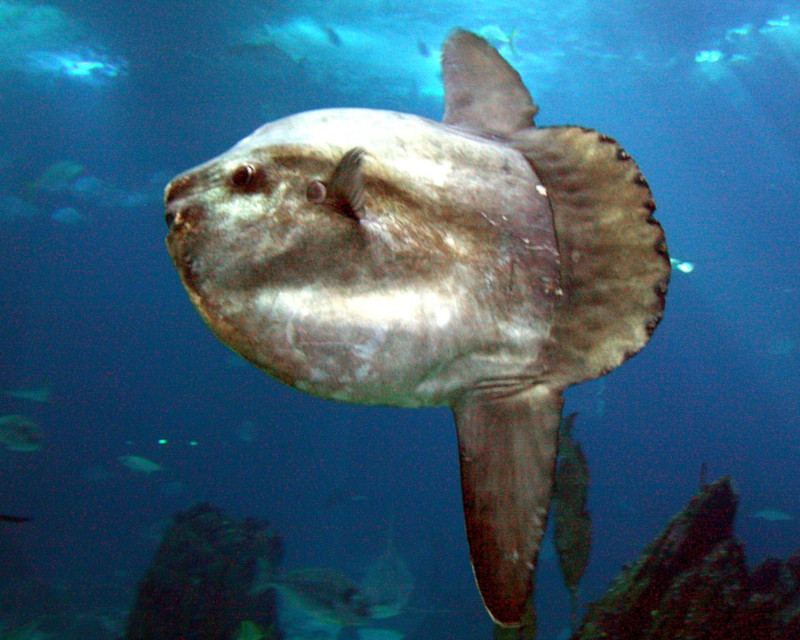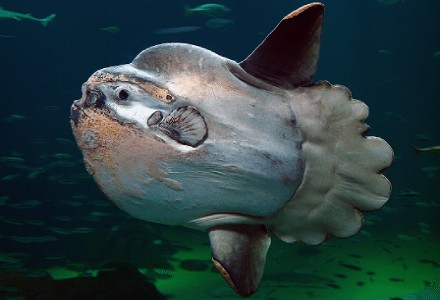
Mola Mola Facts
- The truly distinctive name of Mola Mola applies to the largest known surviving variety of bony fish on earth. The amazing creature also goes by several other names, though. In this, it follows a pattern shared with many other species around the world.
- These multiple alternate common names include such distinctive terms as the common Mola, and the somewhat descriptive name Ocean Sunfish. But the frequently used name of Mola Mola derives from the Latin term.
- This fish also remains well known for a variety of reasons. For one, mature individuals typically develop a body shape measuring as tall as it does long. But, the animal also remains famous among researchers for a different, and remarkable reason.
- On average, the females of this truly impressive species of fish lay more eggs at one time than any other known creature. In point of fact, to be precise, the female sometime lays as many as a mind-boggling 300 million eggs at once.
- Despite its tremendous physical size, this denizen of the ocean has a quite docile temperament. Therefore, it poses no direct threat to human beings. The few reported injuries sustained by encounters with it occurred due to accidents.
- Presently, the IUCN classifies the animal as Vulnerable, on its Red List. Its primary threats come in the form of commercial fishing and encounters with boats. It also, unfortunately, now faces the threat of climate change, just as other species.
Related Articles
Fangtooth White Spotted Puffer Crocodilefish
Mola Mola Physical Description
Incredibly, the Mola Mola represents a truly gigantic variety of bony fish. Physically mature adult specimens attain an average length of 5.9 ft (1.8 m). Yet, the impressive fish also reaches an average fin-to-fin vertical measurement of roughly 8.2 ft (2.5 m).
Exceptional individuals can grow to lengths of as much as 10.8 ft (3.3 m) in length and 14 ft (4.2 m) vertically. Along with this, it must be noted that this remarkably surprising species does not display any noticeable degree of the physical trait of sexual dimorphism.
Since this somewhat uncommon fact holds true, mature individuals of both genders attain an average weight equaling roughly 2,200 lb (1,000 kg). But, quite amazingly, the occasional exceptional individual can weigh as much as a massive 5,100 lb (2,300 kg).
Adding to its uniqueness, the incredible Mola Mola also presents a somewhat wide variety of skin colors. These typically range from white to silvery gray, and even brown. The majority of individuals, though, present distinct mottling among the colors present.
To make this amazing creature even more so, the marvel of Nature also possesses the ability to slightly alter its skin color at will. Thus, in addition to its many other fascinating traits, the species also has the ability to actively camouflage itself.
- Kingdom: Animalia
- Phylum: Chordata
- Class: Actinopterygii
- Order: Tetraodontiformes
- Family: Molidae
- Genus: Mola
- Species: M. mola
Mola Mola Distribution, Habitat, and Ecology
The Mola Mola inhabits an extremely wide territory range. That holds true due to the fact that the enormous animal appears in all of the temperate and tropical oceans of the world. The species does appear to be more common in the Atlantic and Pacific Oceans, though.
The startling creature appears to have evolved to be primarily pelagic in nature. Due to this, the magnificent animal most commonly thrives at depths ranging from the surface to about 2,000 ft (600 m). The huge fish also seems to prefer areas of open water.
But nevertheless, individuals do occasionally venture into regions such as kelp beds. The astounding Mola Mola further spends the greater portion of its time living as a solitary creature. Despite this trend, however, the creature is sometimes spotted in pairs.
Although it typically moves slowly through the water, this wonder of evolution also has the surprising ability to move quite rapidly at times. It has even been known to leap completely clear of the water, utterly startling observers with its actions.
Although individuals do modify their behavior at times, this astounding fish appears to feed primarily as an opportunistic predator. To that end, its diet most commonly includes a wide variety of prey, varying depending upon what part of its range it’s in at the time.
But, this list primarily includes such diverse prey as fish larvae, small fish, crustaceans, small squid, and jellyfish. Further surprising researchers, though, the highly versatile creature will also occasionally consume small amount of eel grass.
Species Sharing Its Range
Blue Shark Pacific Sea Nettle Clymene Dolphin
Check out our other articles on 4 Stunning South American Woody Shrubs, Purple Frog, Berca Mud Volcanoes, Ascension Island Parsley Fern, Cantor’s Giant Softshell Turtle, Harpy Eagle

